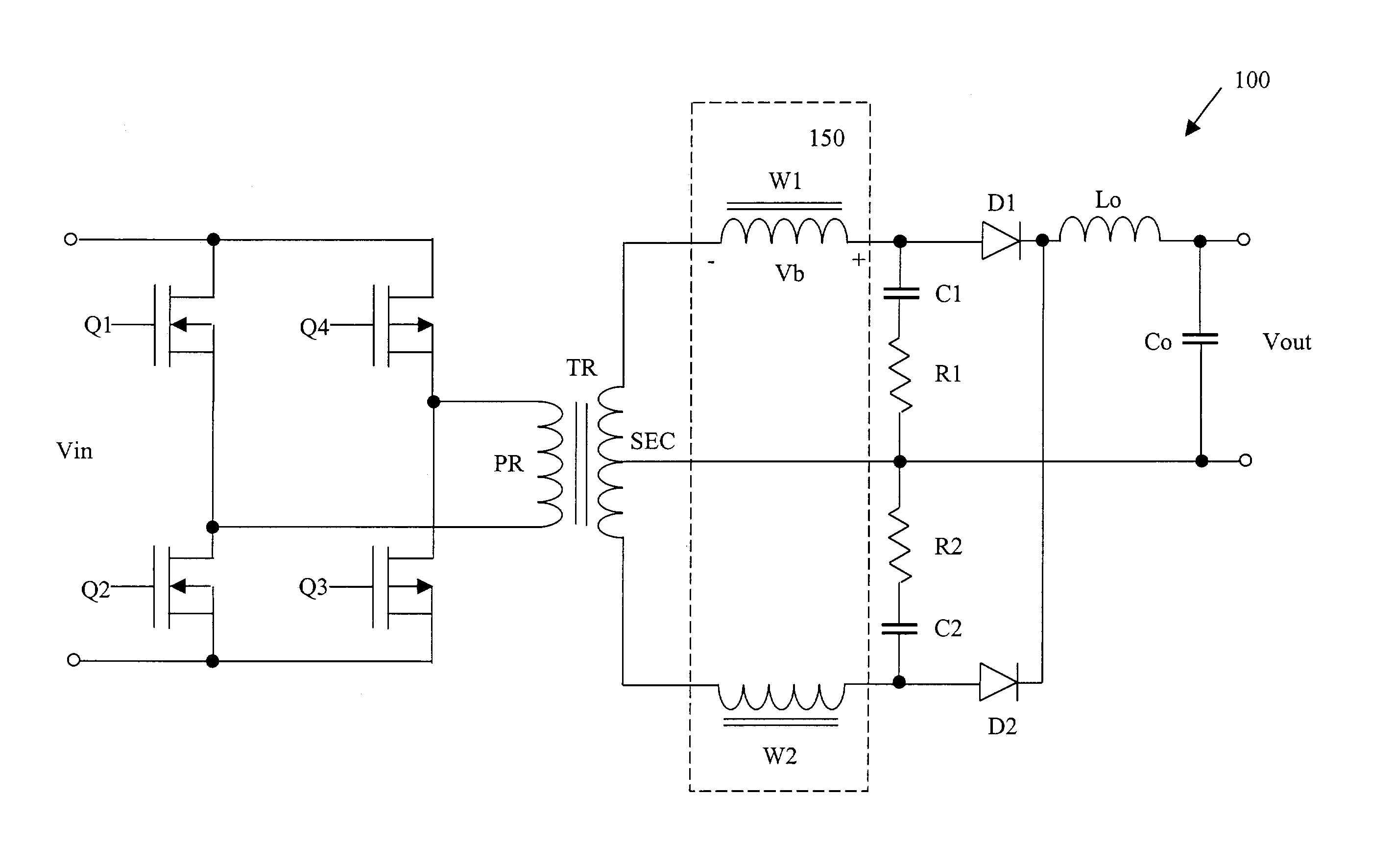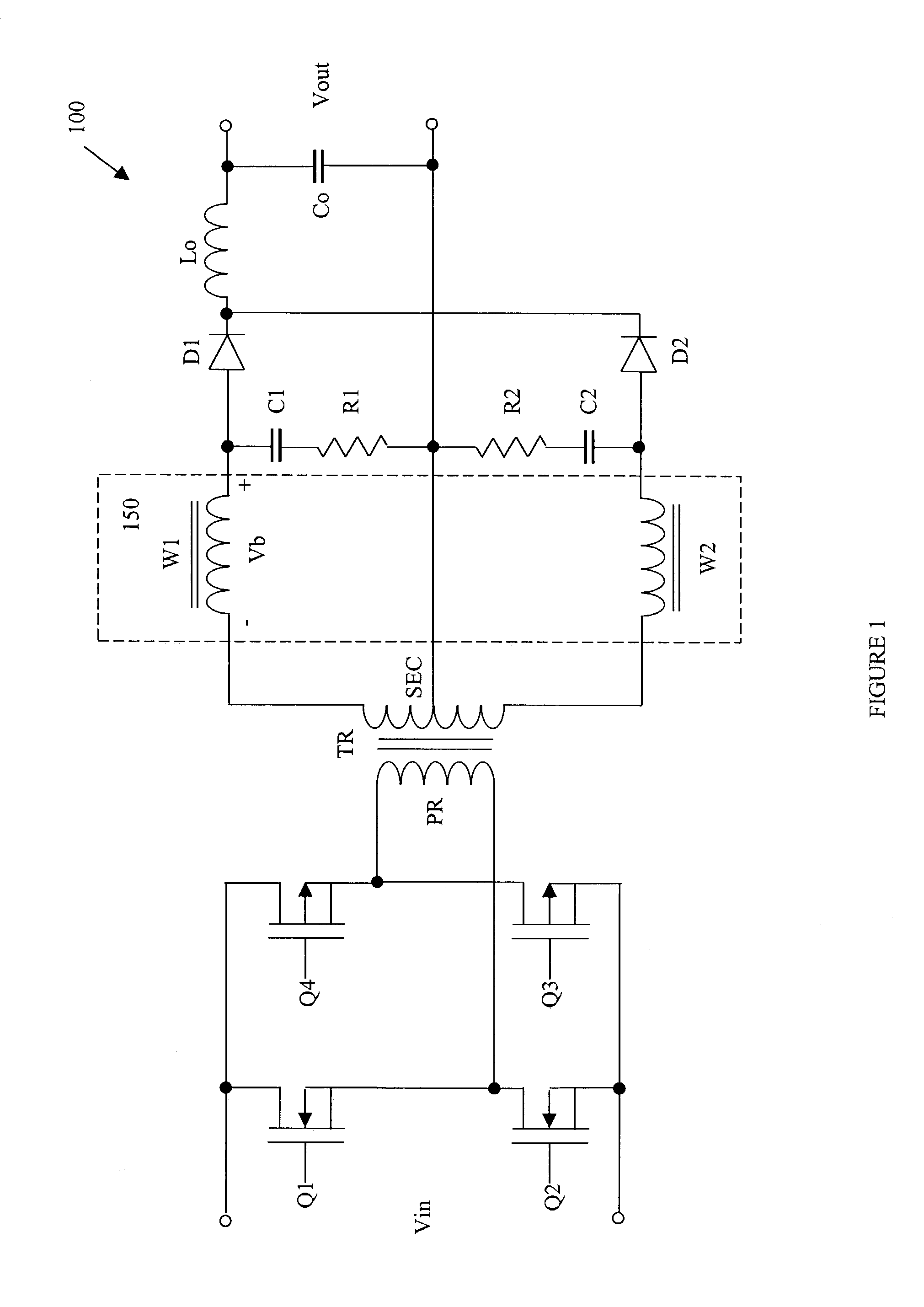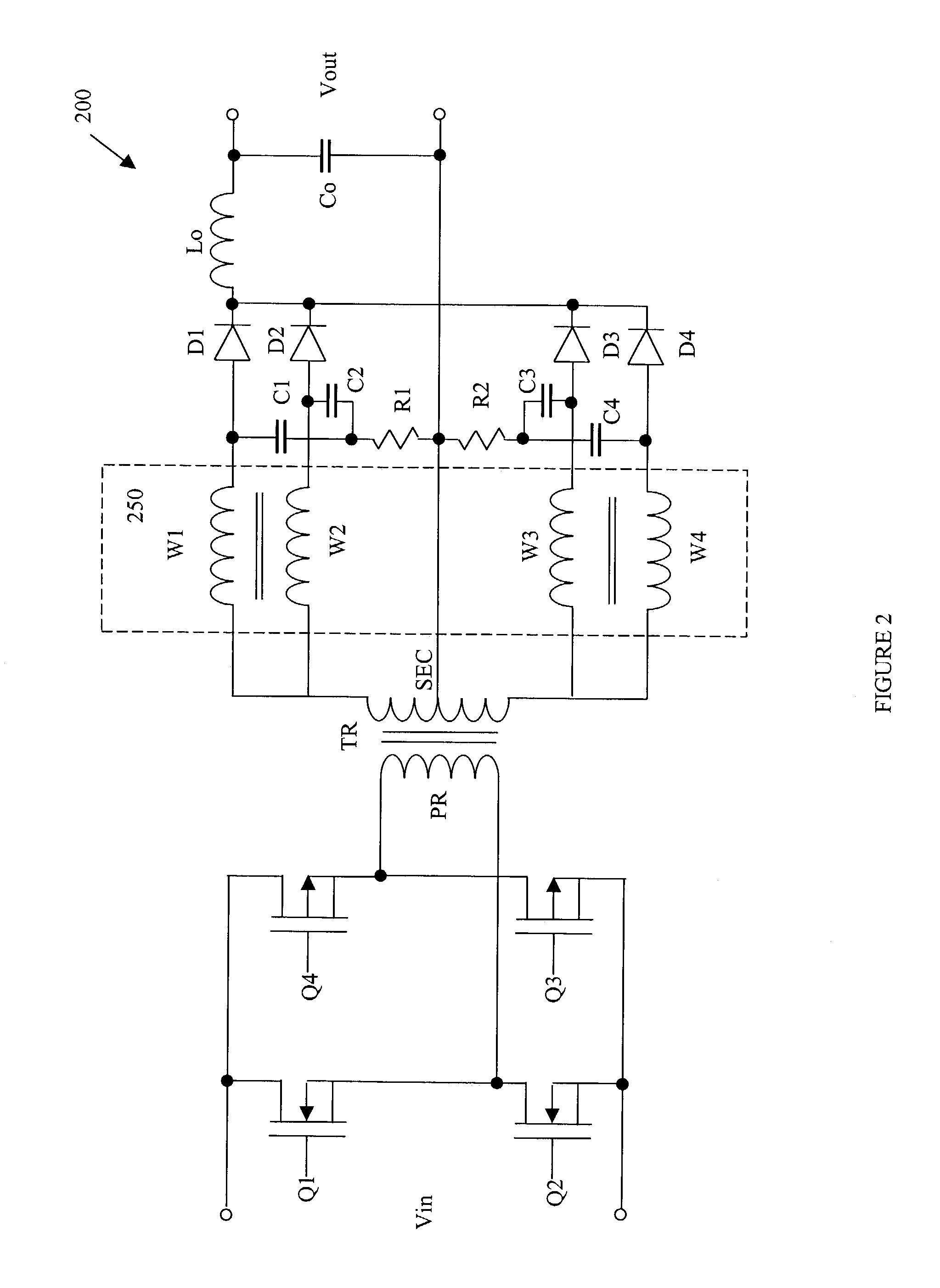Transient suppressor and power converter employing the same
a transient suppressor and power converter technology, applied in the direction of emergency protective arrangements for limiting excess voltage/current, electrical equipment, etc., can solve the problems of power loss in the diodes, reverse recovery of the rectifying diodes, and excess energy storag
- Summary
- Abstract
- Description
- Claims
- Application Information
AI Technical Summary
Benefits of technology
Problems solved by technology
Method used
Image
Examples
Embodiment Construction
[0017]Referring initially to FIG. 1, illustrated is a schematic diagram of an embodiment of a power converter 100 constructed according to the principles of the present invention. While the power converter 100 in the illustrated embodiment employs a full-bridge topology, other types of converter topologies are well within the broad scope of the present invention.
[0018]The power converter 100 is coupled to a source of electrical power and provides an output voltage Vout to a load coupled to an output thereof. The power converter 100 includes a transformer TR having a primary winding PR and a center tapped secondary winding SEC. The power converter 100 also includes a primary circuit having first, second, third and fourth switches Q1, Q2, Q3, Q4 controllable by a control circuit (not shown) to transfer power from the source of electrical power to the load. The power converter 100 also includes a rectifier having first and second rectifying diodes D1, D2 and an output filter circuit ha...
PUM
 Login to View More
Login to View More Abstract
Description
Claims
Application Information
 Login to View More
Login to View More - R&D
- Intellectual Property
- Life Sciences
- Materials
- Tech Scout
- Unparalleled Data Quality
- Higher Quality Content
- 60% Fewer Hallucinations
Browse by: Latest US Patents, China's latest patents, Technical Efficacy Thesaurus, Application Domain, Technology Topic, Popular Technical Reports.
© 2025 PatSnap. All rights reserved.Legal|Privacy policy|Modern Slavery Act Transparency Statement|Sitemap|About US| Contact US: help@patsnap.com



